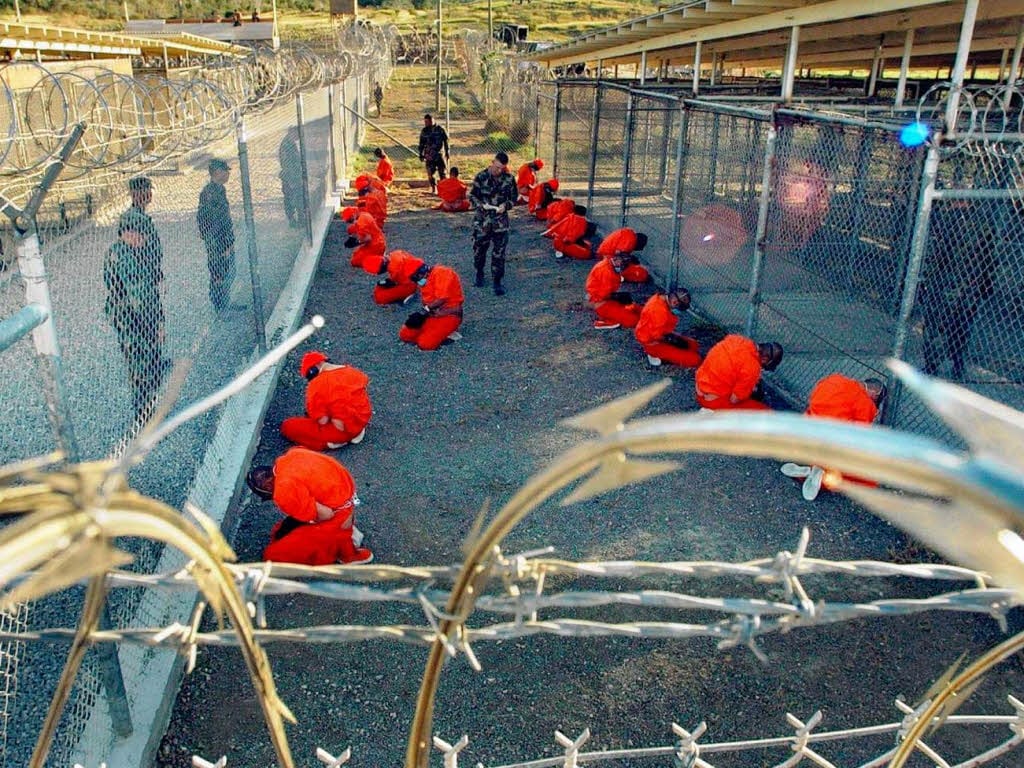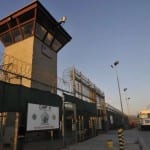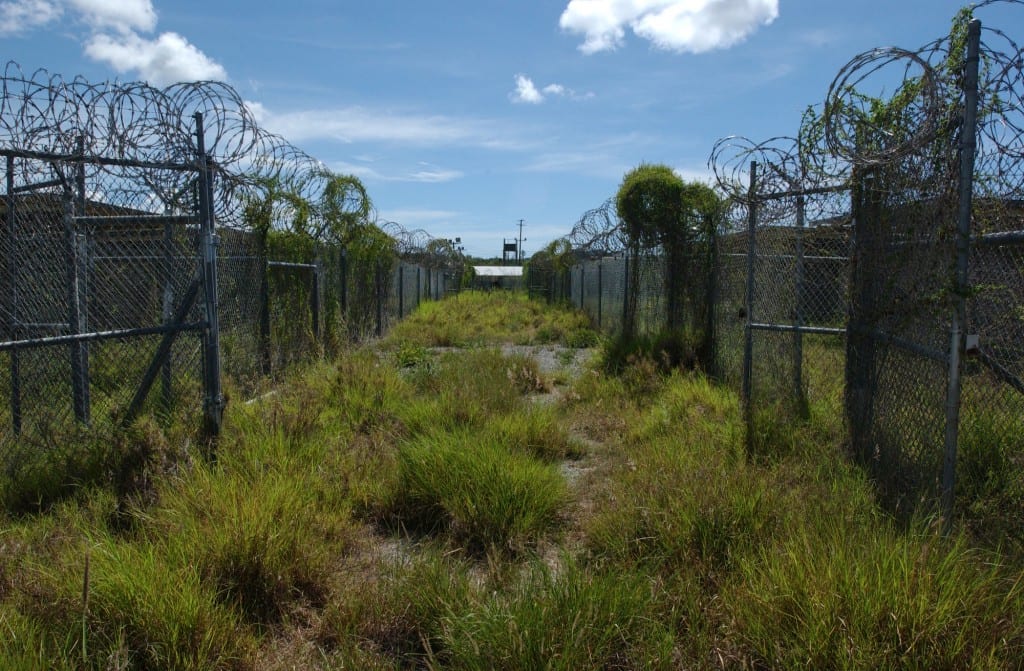 SMU Dedman School of Law Prof. Chris Jenks visited Naval Station Guantanamo Aug. 11-15. This is the fourth blog of the series.
SMU Dedman School of Law Prof. Chris Jenks visited Naval Station Guantanamo Aug. 11-15. This is the fourth blog of the series.
Before the 9/11 attacks, if someone knew about Naval Station Guantanamo Bay it was likely for one of two reasons:
- The 1992 movie “A Few Good Men,” in which Jack Nicholson, playing the part of Marine Col. Nathan Jessup assigned to Gitmo, spoke of eating breakfast “300 yards from 4,000 Cubans trained to kill me” and whether Tom Cruise could or couldn’t handle the truth.
- The role Gitmo played as refugee camps, first for Haitians and later for Cubans from 1991 to 1996.
While “A Few Good Men” was entertaining, Gitmo’s role as a refugee camp was more significant, since it established the conditions for future detention of al-Qaida and Taliban members.
In 1991, a military coup d’etat in Haiti prompted thousands of Haitians to flee the country in hopes of reaching the U.S. The U.S. Coast Guard intercepted some 41,000 of them and redirected them to Gitmo. As a result, the U.S. constructed a series of camps at Gitmo to house the refugees while considering the Haitians’ asylum claims.
The U.S. deemed many of the refugees to be economic migrants, not political refugees, and returned them to Haiti. Even more controversial was the status of the refugees who qualified for asylum but were denied entry into the U.S. because they were HIV-positive. This generated considerable backlash, and ultimately litigation. It wasn’t until late 1993 that the Clinton administration agreed to close the camp and allow the remaining Haitian refugees to enter the U.S.
About a year after the detainment camp closed, it was reopened, this time for an influx of Cuban refugees. After a series of anti-government protests in Havana, Fidel Castro allowed anyone wanting to leave Cuba to do so. Some 100,000 Cubans did just that, and headed to Gitmo on homemade rafts, boats, even inner tubes — traveling there by sea to avoid the landmines separating Gitmo from the rest of Cuba. (Interesting aside: Both the U.S. and Cuba have planted 55,000 mines along the perimeter of Gitmo, making it the largest minefield in the western hemisphere and second-largest in the world [Korea being the largest]. In 1998 President Clinton directed the removal of U.S. mines. The Cubans have yet to remove their mines.)
With the U.S. again in the business of housing and processing refugees at Gitmo, a series of camps were built. The military, ever fond of the phonetic alphabet, named the first camp “Alpha,” then “Bravo,” “Charlie,” etc. There were camps for families, camps for single men, camps for kids without parents. There was even a camp for those who caused problems in the other camps: Camp X-Ray.
Unlike the communal-style refugee camps, Camp X-Ray was a tougher confinement facility, with barbed wire atop chain link fences, guard towers and chain-link housing areas for the refugees. After the Cuban refugee crisis was resolved, the U.S. closed the camps in 1996. But fast-forward to January 2002 — three months after the U.S. invasion of Afghanistan following the 9/11 attacks: With the U.S. fighting in Afghanistan, and in the process capturing enemy belligerents, the question of where to house the detainees arose. The answer, for reasons we may never fully understand, was Gitmo.
So, here we are.
Capturing enemy belligerents is part and parcel of armed conflict. Each side’s military may capture and detain the other side’s combatants for the duration of the conflict. And typically, housing those who are captured away from the battlefield doesn’t pose a problem. During World War II, America housed hundreds of thousands of German and Italian prisoners of war in camps in the U.S.
In this case, real problems arose when the U.S. unwisely (and incorrectly) decided that no part of the Geneva Conventions applied to or protected members of al-Qaida and the Taliban. The Geneva Conventions form the basis of military regulations, training and manuals for detention operations, so excluding them created both a legal and practical void, one later recognized as incorrect or impermissible by the U.S. Supreme Court.
The U.S. military filled this void with “enhanced interrogation techniques” that allowed for a variety of actions against the detainees, including stripping them of clothes, 24 straight hours of interrogation and stress-inducing exploitation of their phobias. Even worse, the CIA introduced a host of other techniques that included waterboarding, per the guidance of the Department of Justice. While some of this mistreatment occurred outside Gitmo, some of it most assuredly occurred at Gitmo, beginning at Camp X-Ray.
One of the iconic images from the “Global War on Terror” (above) shows detainees at Camp X-Ray, which the U.S. initially utilized to hold al-Qaida and Taliban detainees for four months. (So now if you see the upcoming movie “Camp X-Ray,” starring “Twilight” actress Kristen Stewart, and hear about the plan to house detainees there for eight years, you’ll know that’s not correct.)
During this time the U.S. purportedly so abused Saudi detainee Mohammed al-Qahtani, who allegedly tried to participate in the 9/11 attacks, that he was left in a life-threatening situation. This led to the first U.S. government acknowledgment of torture at Gitmo. And it raises the difficult issue of what to do with al-Qahtani. Since 2002 and the short-lived use of Camp X-Ray, the U.S. has built a series of more permanent (and more expensive) “camps” to house al-Qaida and Taliban detainees.
- Camp exterior
- Camp interior
- New camp soccer field
The U.S. is well past the chain-link fence origins of Camp X-Ray: “Camps” are now state-of-the art facilities similar to maximum-security prisons in the U.S. Depending on each detainee’s security classification and how “compliant” that person is, current conditions at Gitmo include allowing them access to DVDs, television and a new $744,000 soccer field.
Meanwhile Camp X-Ray, while closed, still exists. Well, kind of. The U.S. government had planned to demolish it but a federal district judge ordered it preserved as potential evidence of cruel, inhumane, degrading treatment or torture of the detainees once housed there. Currently Camp X-Ray is slowly rotting away in the Cuban heat.
While the U.S. has released or transferred more than 600 detainees, some 149 remain. Some are being tried by military commission, some are awaiting military parole-type hearings, and some have been cleared for transfer but can’t leave due to issues between the U.S. and the country where they would go. And then there are those whom the U.S. has no plans to transfer or prosecute. — C.J.
Next Up: Military Commissions and the Road Ahead: The Cost of Justice.









